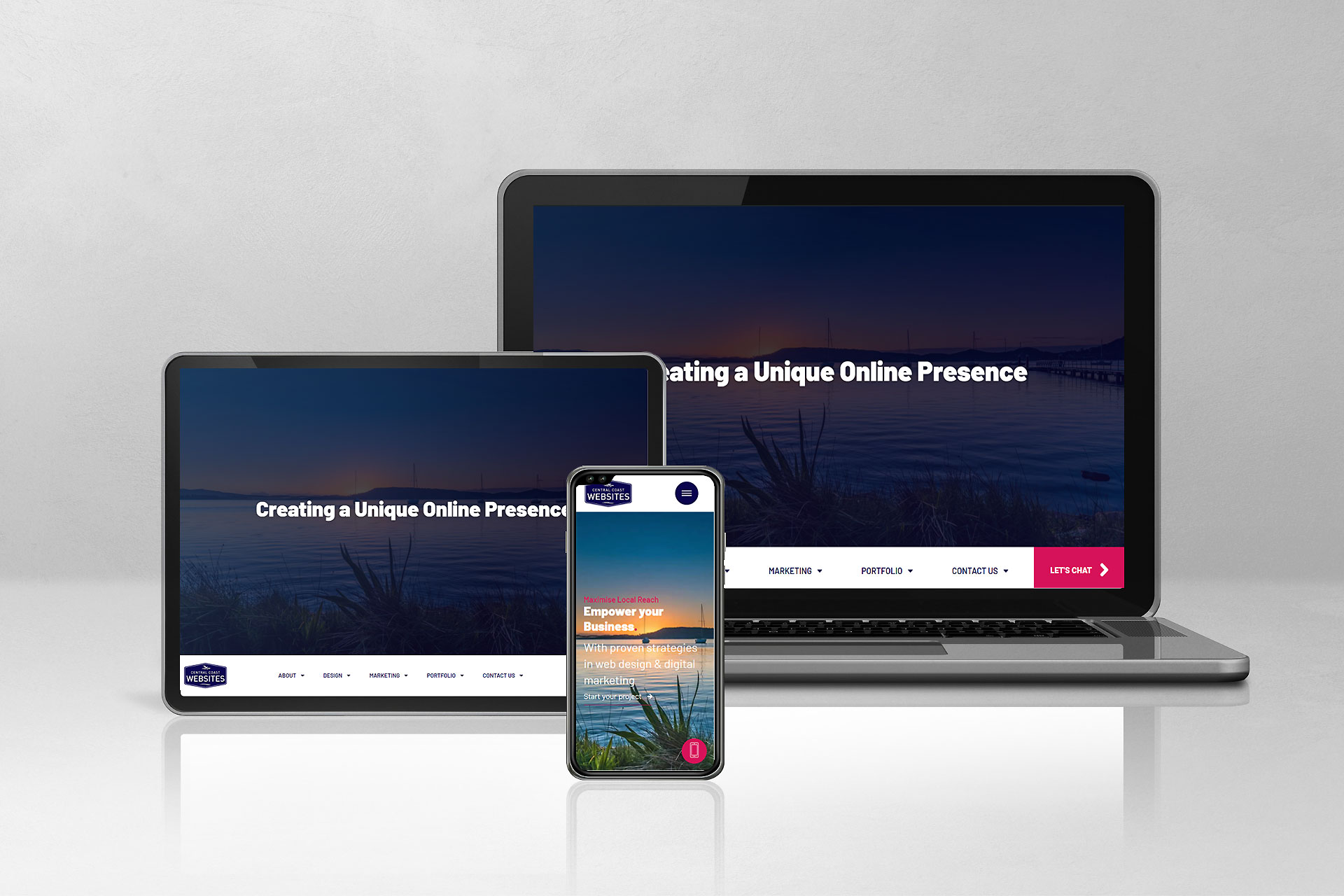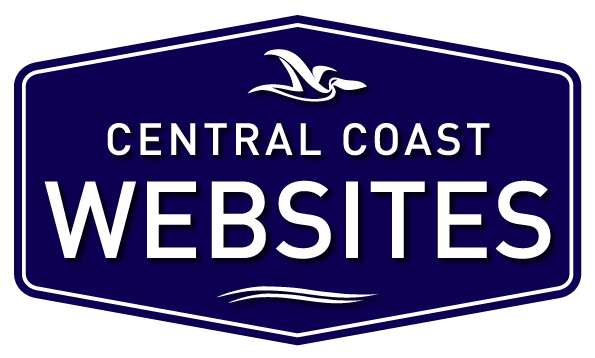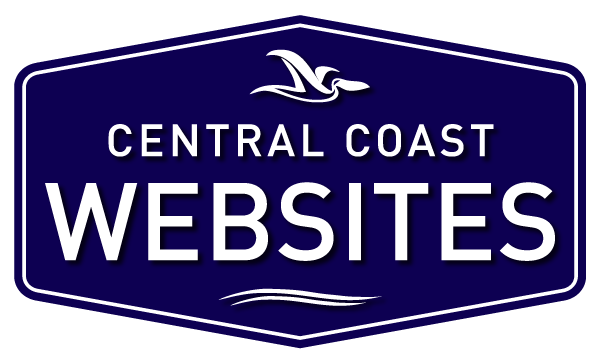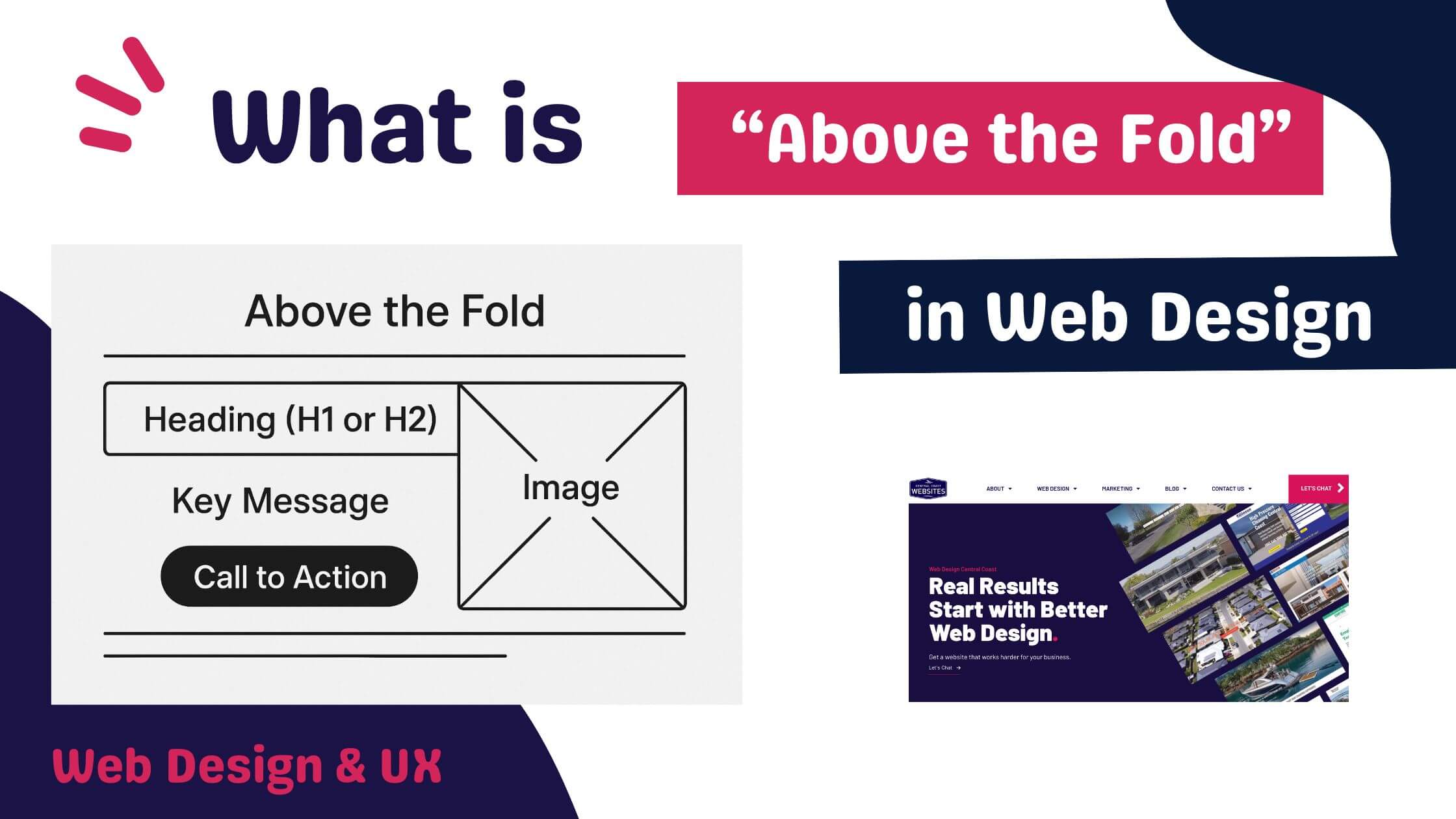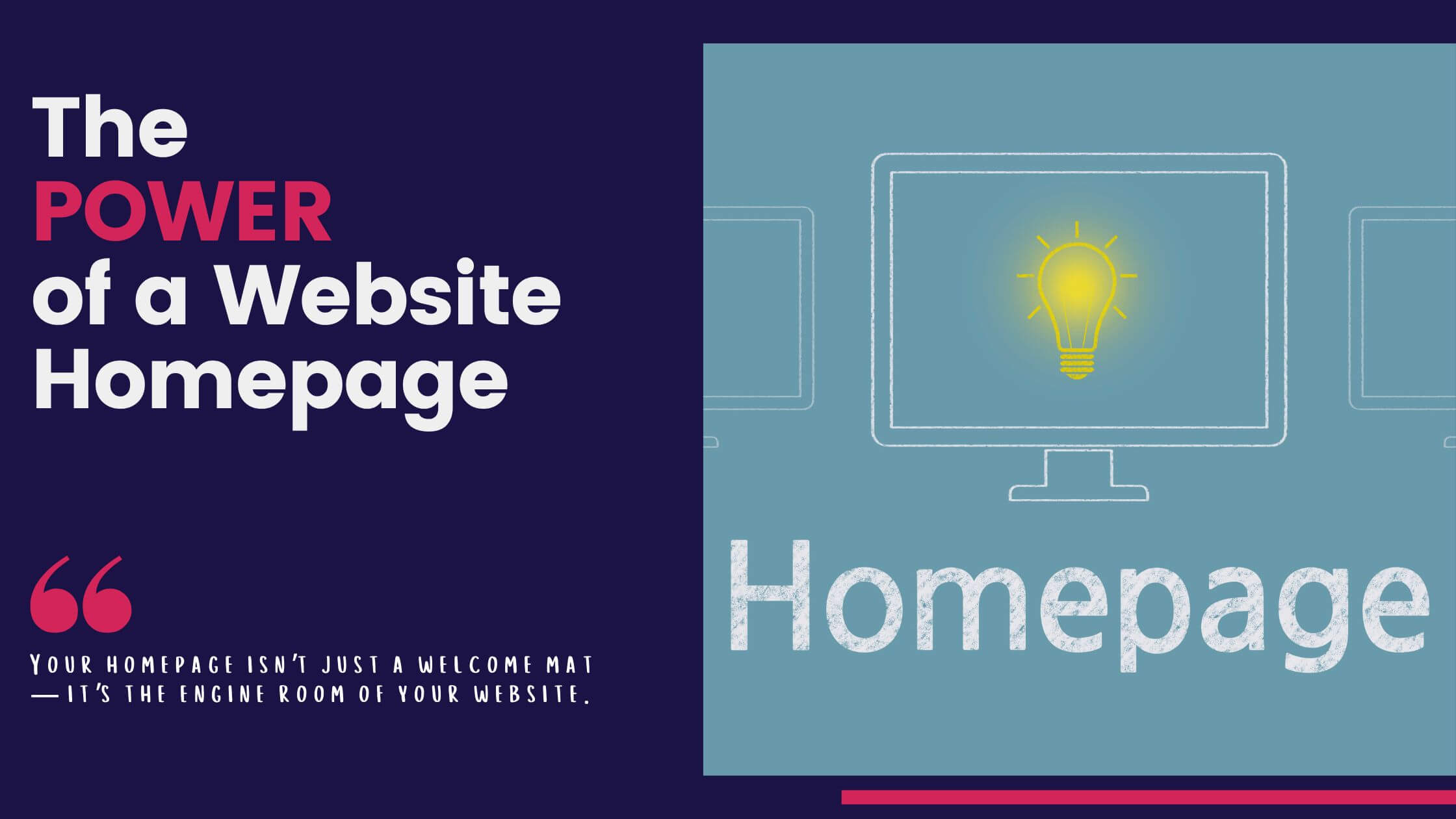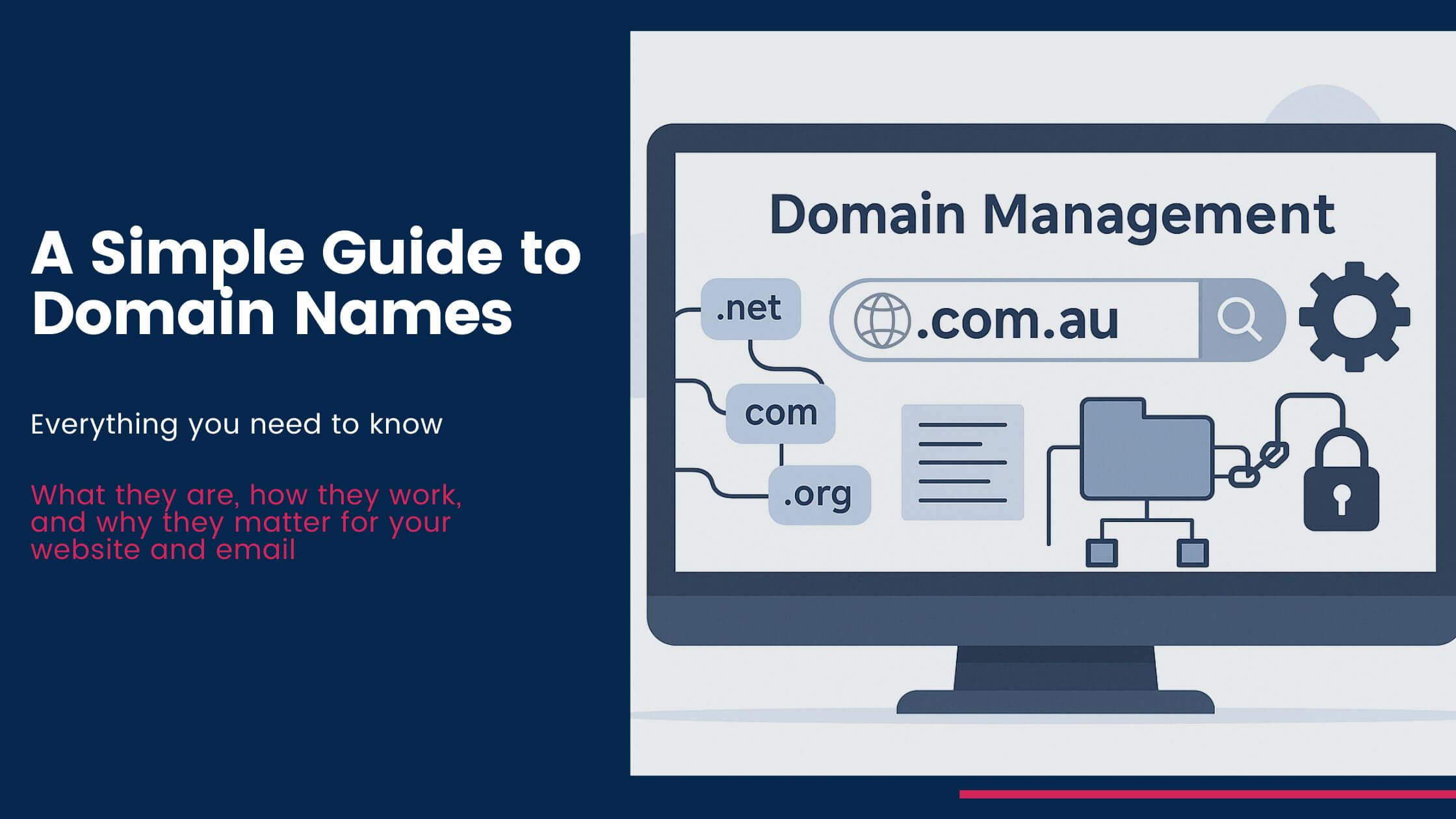One Homepage, Capturing Four Different Audiences.
Over the years of working on countless websites and SEO campaigns, one thing has become very clear: a homepage that works isn’t just about looking good. It has a job to do, actually, four jobs at once.
Every visitor arrives with a different intent. Some are ready to act straight away. Others are still researching. A few just want to find a specific page. If a homepage only caters to one of those groups, the rest will go looking somewhere else.
That’s why I look at homepages through four core content types: commercial content, transactional content, informational content, and navigational content. Get the balance right with the content types and above the fold content and your homepage doesn’t just rank better in Google, it also converts more visitors into leads, bookings, and customers.
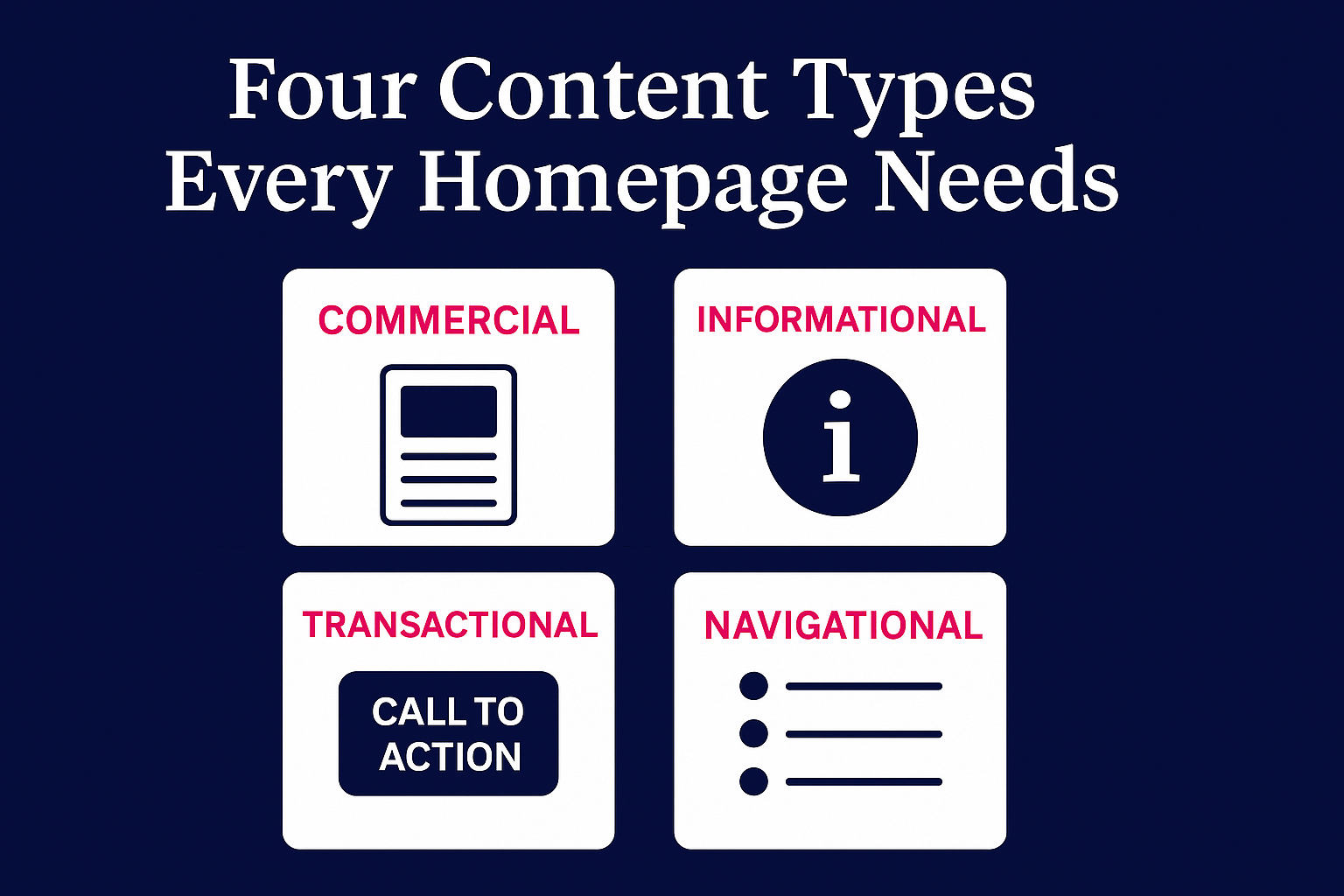
1. Commercial Content: Showing What You Do Clearly.
This one sounds obvious, but you’d be surprised how often it’s missed. A homepage should spell out exactly what you do and who you help. Visitors shouldn’t have to scroll or guess, they should know within seconds whether your business is relevant to them.
In practice, this means:
- A clear overview of your services or products.
- A positioning statement like “Trusted solar installers on the Central Coast” or “Holiday rentals across the Central Coast, Hunter Valley, and beyond.”
- A simple “who we help” line (e.g., residential, commercial, or specific industries).
From an SEO perspective, this is where your H1 and H2s come in. They need to be aligned with your commercial keywords, but still written in a way that’s natural and human. I’ve seen sites tank rankings because they got too clever with copy and forgot about keyword relevance.
2. Transactional Content: Encouraging Action.
A homepage isn’t just for browsing, it’s there to drive action. Whether that’s making a booking, filling out an enquiry form, or picking up the phone, you need to make the next step easy.
What I’ve found works best:
- A clear call to action above the fold.
- Multiple CTAs throughout the page, because not everyone decides at the same point.
- Buttons that stand out visually and use action-focused language (“Get a Quote,” “Book Now,” “Let’s Chat”).
- Forms that are quick to fill out and mobile-friendly.
From an SEO and conversion perspective, your CTAs can also include keywords naturally. But the main thing is making sure they’re visible. Too many homepages bury the most important action at the very bottom, and wonder why conversions are low.
3. Informational Content: Building Confidence.
Not every visitor is ready to buy. Some are comparing you to competitors. Others are still learning about your service. This is where informational content comes in, giving them just enough to feel confident exploring further.
This could be:
- A short “About Us” section with personality.
- A quick explainer of your process, broken into simple steps.
- Links to resources like blogs, FAQs, or case studies for those who want to dig deeper.
I’ve seen this content make all the difference in reducing bounce rates. It reassures people that you know what you’re doing and that you’re a safe choice. And from an SEO angle, it’s a great place to link to supporting content and build topical authority.
4. Navigational Content: Helping People Find What They Need .
Finally, navigation. It’s not glamorous, but it’s essential. Many people land on a homepage because they’ve seen your brand elsewhere, and they’re looking for something specific. If your menus and links don’t make it easy, they’ll give up.
Strong navigation usually means:
- A clean top menu with five or six main items.
- Logical footer links that cover essentials (contact, FAQs, services, locations).
- Easy access to service areas or location pages if you’re a local business.
- Mobile-first design, because if it’s clunky on a phone, you’re losing half your audience.
From an SEO standpoint, clear navigation also helps Google crawl and understand your site structure. It’s one of those areas where good design and good SEO line up perfectly.
Why These Four Types Work Together.
The truth is, no single content type carries a homepage. You need all four working together:
- Commercial tells people what you do.
- Transactional makes it easy to act.
- Informational reassures those who are still deciding.
- Navigational keeps everyone moving in the right direction.
Our team has worked on plenty of websites where fixing just one of these areas made a big difference. But when you balance all four, that’s when the homepage really does its job, ranking well, building trust, and converting visitors.
Final Thoughts on Content Types for a Homepage.
Your homepage isn’t just a pretty design, it’s the most important page on your site. Think of it as your digital front door. If people arrive and feel confused, pressured, or lost, they’ll leave. But if they arrive and immediately understand what you do, see a clear next step, and feel confident in you, that’s when they stick around and convert.
If you’re not sure your homepage has the right balance of content types, start with an audit. Look at it through the eyes of different visitors: the ready-to-buy, the researcher, and the one who just needs to find a quick link. Does your homepage work for all of them?
That’s the real test.
